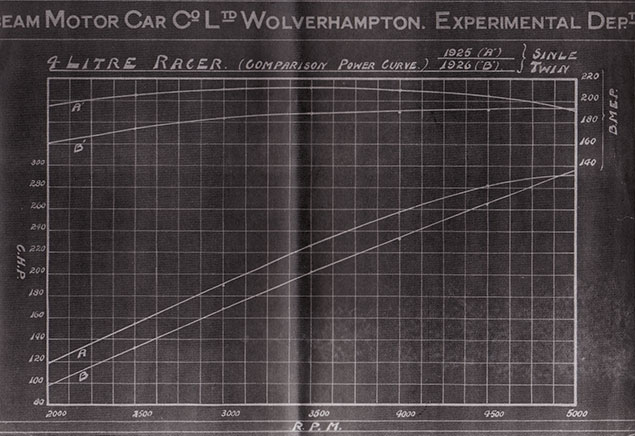V-12 cylinder, 4 o.h.c supercharged 67mm x 94mm(3,976cc). The full roller bearing engine utilized two cylinder blocks resembling to the 1923 / 1924 two-litre Grand Prix cars but not identical. The two banks of six-cylinder each set at 60-degrees on the aluminum crankcase and mounted directly on the chassis frame. Unlike the 2-litre cars, each bank was assembled in three blocks of two cylinders; but like the preceding 2-litre cars, each cylinder barrel is a separate forging complete with non-detachable head welded onto a common baseplate; ports and water jacket welded around adding rigidity. Two valves per cylinder (24 in total) inclined at 96 degrees operated by twin camshafts (4 o.h.c. for the two banks) driven by spur gear train from rear of crankshaft; actuating pivoted fingers and running in roller bearings. Inlet valves 30% larger than exhaust valves. Main and big end bearings are all split-cage roller bearings. One-piece crankshaft running in eight main bearings. Domed and recessed aluminum Pistons. Machined steel connecting rods, each housing split cage roller bearing for the big end.
The single 230mm Roots blower was driven off the front end of the crankshaft and placed between the barrel throttle Solex carburetor and induction manifold. The single blower casing cracked repeatedly due to distortion and was replaced after the Land Speed Record with two smaller 140mm superchargers breathing through two 46mm choke Solex carburettors.
Running on 60/40 petrol/benzole fuel with compression 5.9:1 and supercharger boost 7.2psi at 4,000rpm it developed 305bhp at 5,300rpm to achieve maximum speed 155-160mph. By 1930 340bhp at 5,500rpm was achieved.

